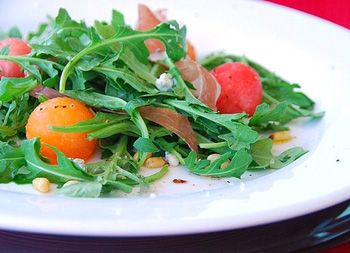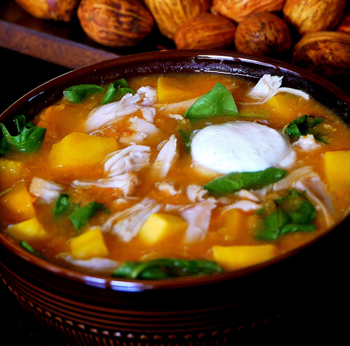 Strawberry season is in full swing across most of the country, so chances are you're buying lots of them. You are, aren't you? Then that also means you likely have a few soft or slightly bruised berries -- good enough to eat but not pristine enough to showcase on the top of a strawberry shortcake.
Strawberry season is in full swing across most of the country, so chances are you're buying lots of them. You are, aren't you? Then that also means you likely have a few soft or slightly bruised berries -- good enough to eat but not pristine enough to showcase on the top of a strawberry shortcake.
Well I'm not going to suggest you use them to make sweet jam or a smoothie (though I love both). I'm going savory with strawberries. That's right. If you've never paired strawberries with meat, then expect to be wowed.
Succulent strawberries and creamy mango are enhanced with aromatic anise seed in this simple yet flavorful salsa. The fruits' sweetness provides the perfect balance to the savory, buttery flavor of the pork tenderloin.


 In case you’re wondering who Mateo is, that’s me. That’s my name in Spanish, a title only used at home by my grandparents and when I did something terribly wrong as a child.
In case you’re wondering who Mateo is, that’s me. That’s my name in Spanish, a title only used at home by my grandparents and when I did something terribly wrong as a child. All summer long I love to make ice creams and sorbets. I use all types of fruit to create the most fantastic flavors. For ice creams, too, I enjoy creating unique flavors with herbs and spices. These frozen treats are sweet and dessert-like, but they also work to cleanse the palate after a meal. So before the warm weather ends this September, I'm using my ice cream maker one last time.
All summer long I love to make ice creams and sorbets. I use all types of fruit to create the most fantastic flavors. For ice creams, too, I enjoy creating unique flavors with herbs and spices. These frozen treats are sweet and dessert-like, but they also work to cleanse the palate after a meal. So before the warm weather ends this September, I'm using my ice cream maker one last time. My mom has been pairing prosciutto with cantaloupe and melons from the time when cordless phones were first introduced (you had to pull out the long telescope antenna, and could hear yourself on your radio if you stood too close).
My mom has been pairing prosciutto with cantaloupe and melons from the time when cordless phones were first introduced (you had to pull out the long telescope antenna, and could hear yourself on your radio if you stood too close).